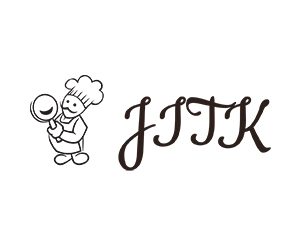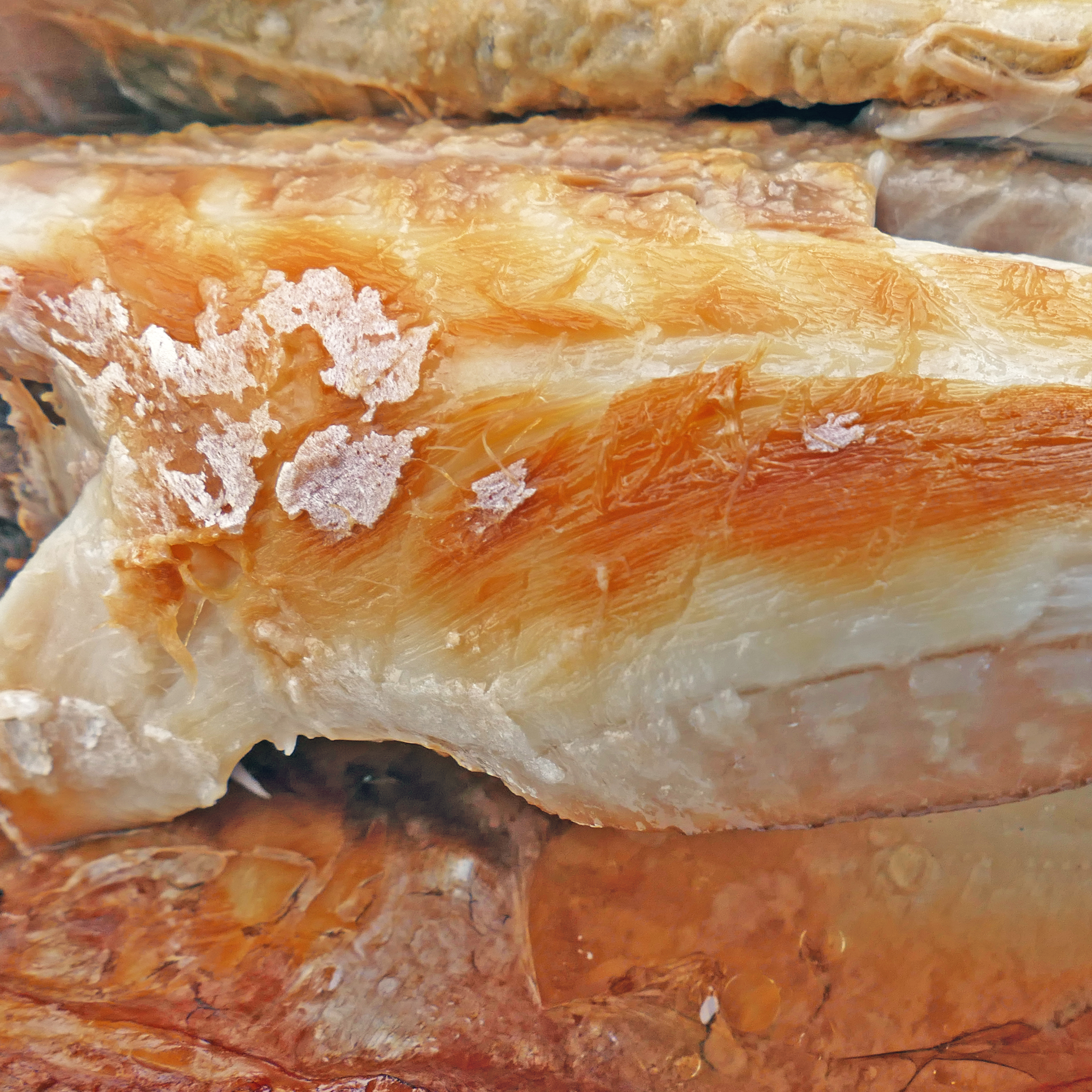For many years I´ve loved smoked foods, from cheese to salmon and mackerel to gammon and sausages. As most of the smoked versions of these don´t seem to be available in this part of Spain, I decided to do a bit of research into whether it would be possible to smoke food at home, and the answer was a resounding YES! I thought I´d share with you my experience, and so An Introduction to Smoking Food was born.
If you like this post, why not take a look at another post in the “Introduction” series, An Introduction to Sausage Making.
The first thing I learned is that there are basically two methods of smoking food:
- Cold smoking, which can be used as a way to preserve food. It involves a lot of smoke, but there is very little heat produced, as the smoke generator is often quite a distance from the food. For me, the most famous food using this method is smoked salmon. The flavour and texture make it simply the most deliciously tasty smoked food ever. This method requires a long smoking time and the equipment used is a little more complex that with hot smoking.
- Hot smoking. This method both smokes and cooks the food. So, food types that cannot be cooked, such as cheese, don´t use this method. Its generally quicker than cold smoking, and requires a simpler setup.
Although my goal is to try my hand at both methods of smoking, with a little research I found I could equip myself with a hot smoker for not too much money (€35), so that seemed the obvious starting point to the world of smoking for me. If it went well with a variety of food types, I would then build a smoker that could perform both hot and cold smoking, with temperature gauges, fans and all the bells and whistles considered necessary (or even just beneficial) for larger-scale smoking.
Fish can be hot smoked straight away (“river to smoker”) but most of the books and articles I´ve read recommend first brining the fish. This is adding salt, plus any other ingredients such as sugar and lemon, to water then giving the fish a good long soak. This gives two important benefits:
- It improves the flavour.
- It helps prevent the fish from drying out during the smoking process.
The end result is both tastier and more succulent!
Hot Smoking Method
- Gut the fish if not already done by the fishmonger.
- Rinse it well under cold running water.
- Brine in a saltwater solution (with added ingredients if desired).
- Smoke in a hot smoker.
Brining
The brine can be a weak brine (20:1 water to salt ratio) right up to a strong brine (4:1). I opted for something about half-way, as I had the time to brine for longer, and didn´t want to use up too much salt in the process. I then added lemon and sugar.
Ingredients for Brining
- 2 litres cold water
- 200 g salt
- zest and juice of a lemon
- 2 large pinches of white sugar
Method
- Stir the mix well and place the fish in the liquid.
- Brine for 4 hours, turning the fish halfway through. Stir a couple of times during the brining process.
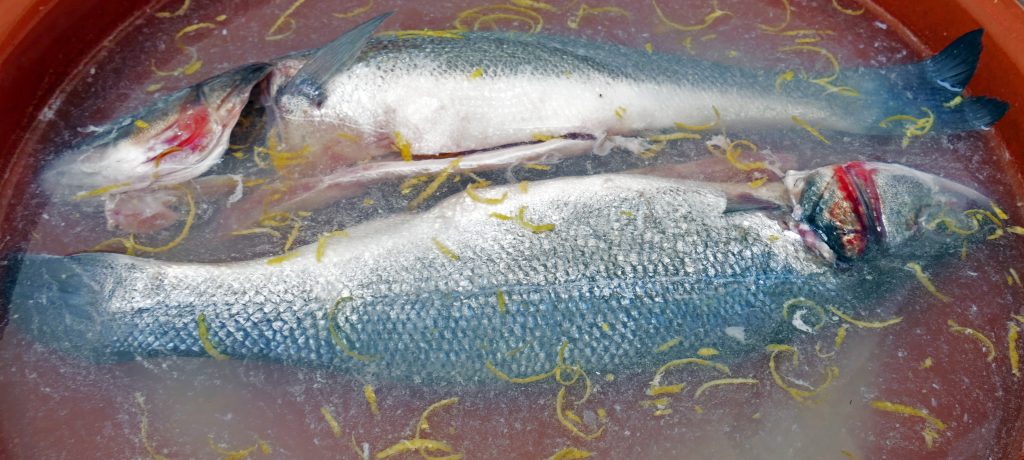
Smoking
See the image below. Starting at the top, we have the base, with a pair of burners and burner caps.
Moving clockwise, you can see the smoker body, 2 food grills, the drip tray and the lid.
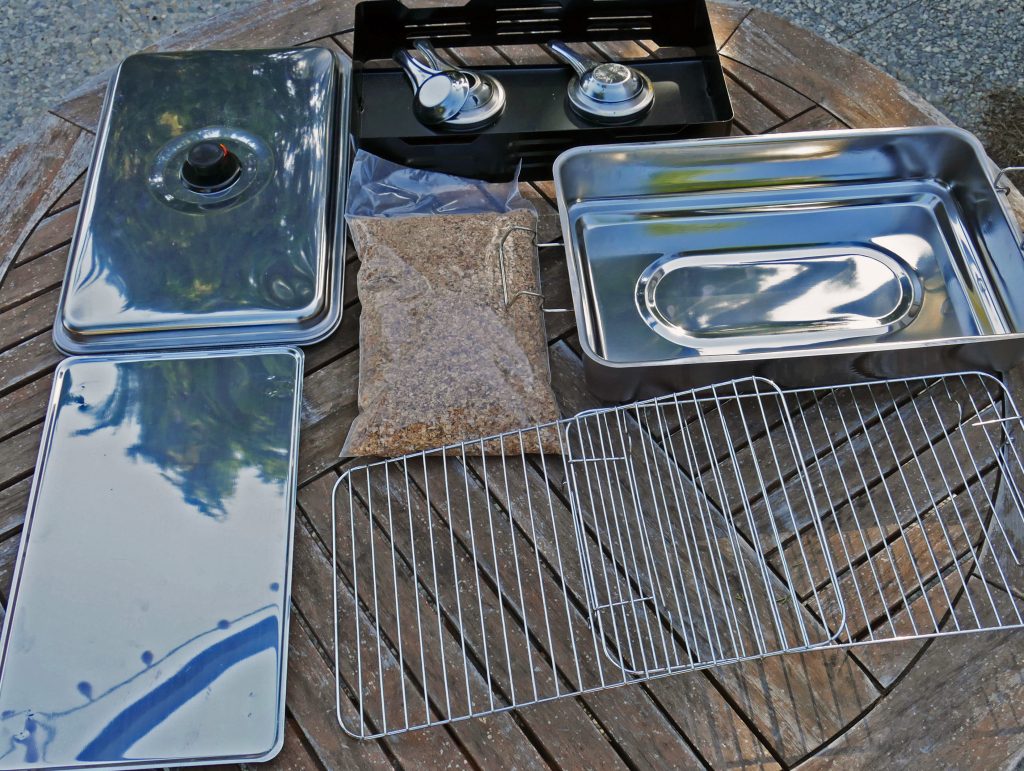
Fitting the smoker parts together
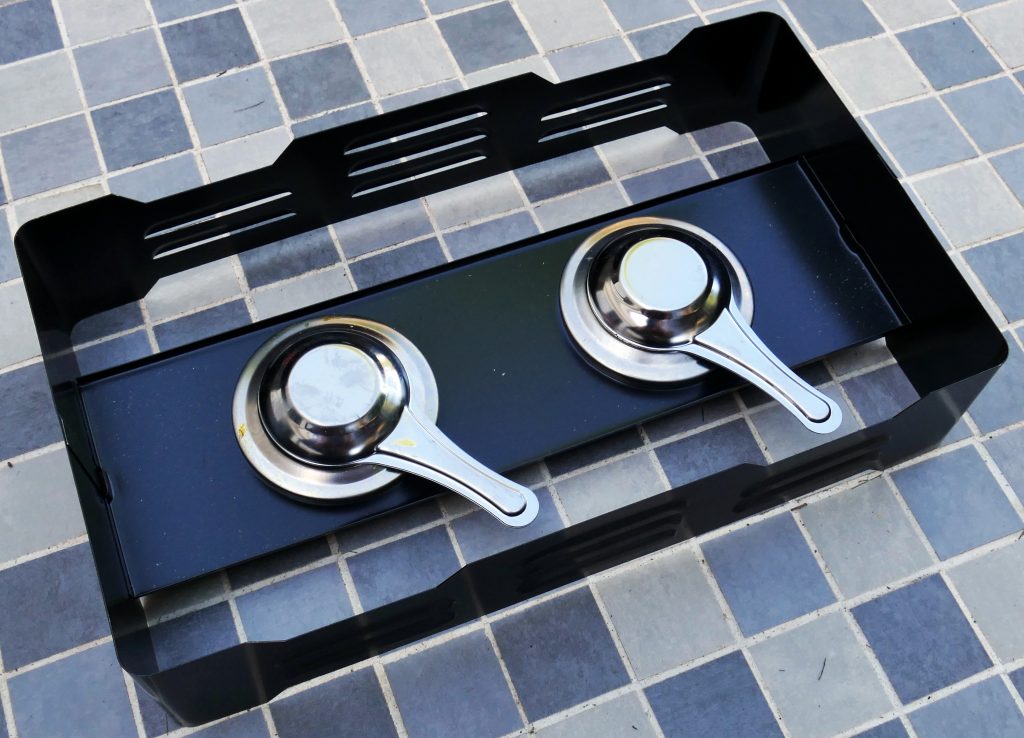



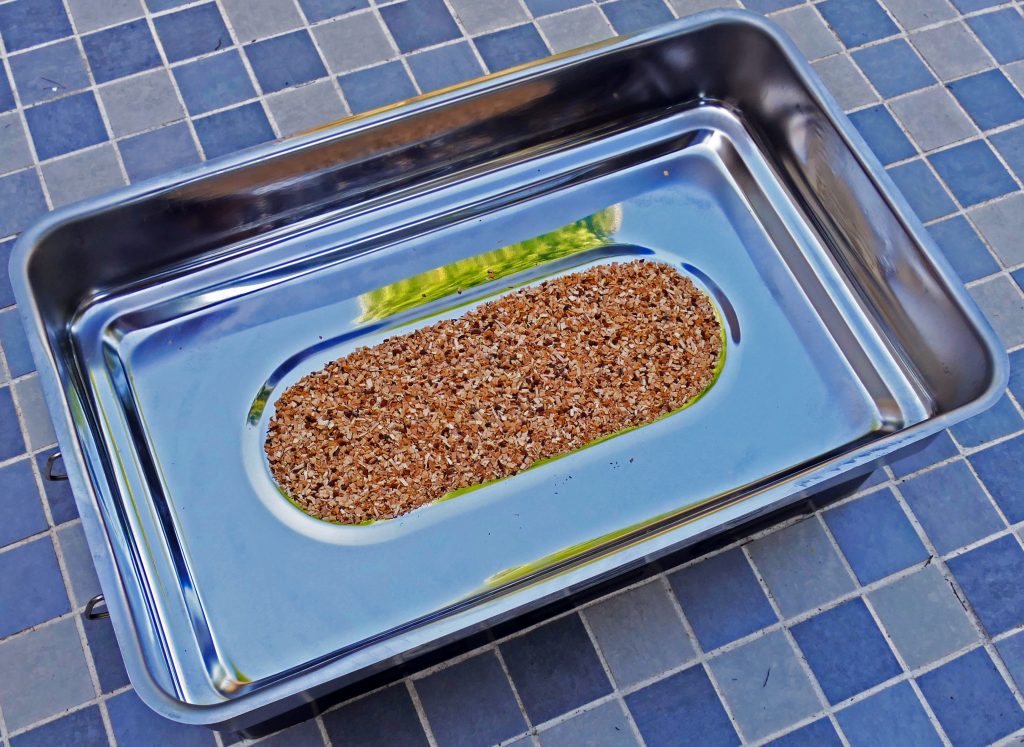
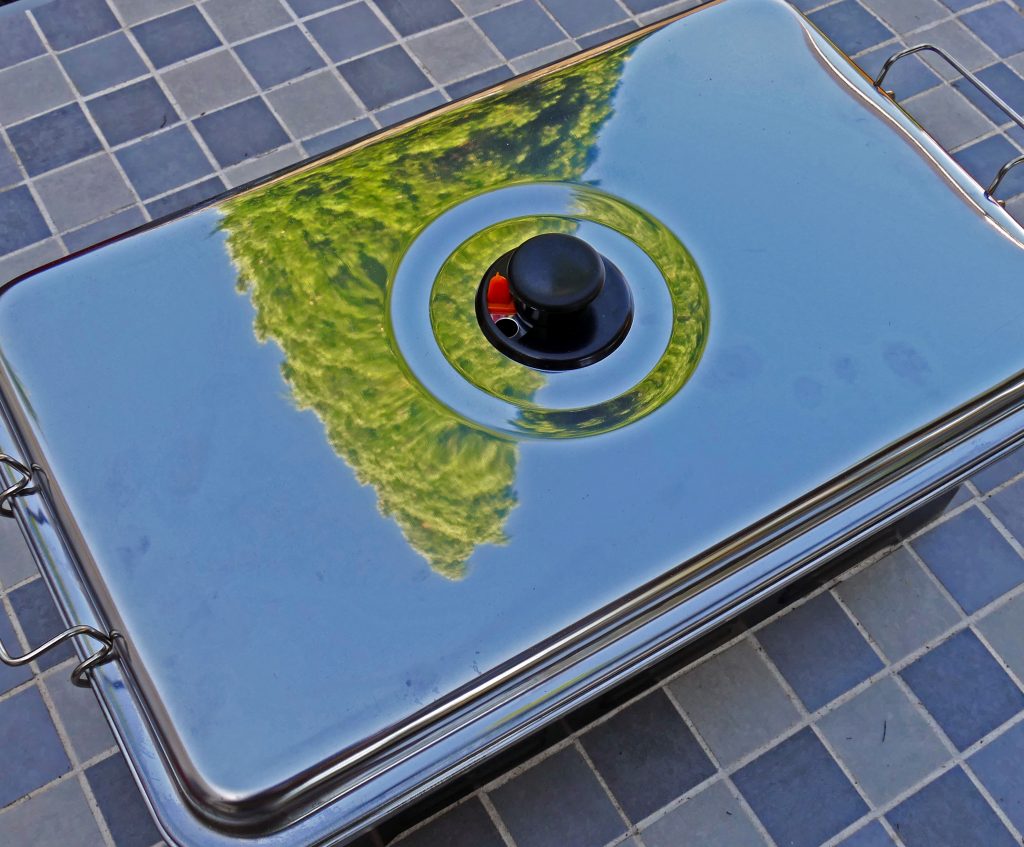
Smoking Method
- I forgot to take a photo of the brined uncooked fish, in my excitement! Fasten the lid with the two end clips and ensure the smoke escape hole is open.
- Lift the body from the base, remove the burner caps, light the burners and replace the body on top of the base.
- Wait 20-25 minutes for the smoker to do its job, et voila!
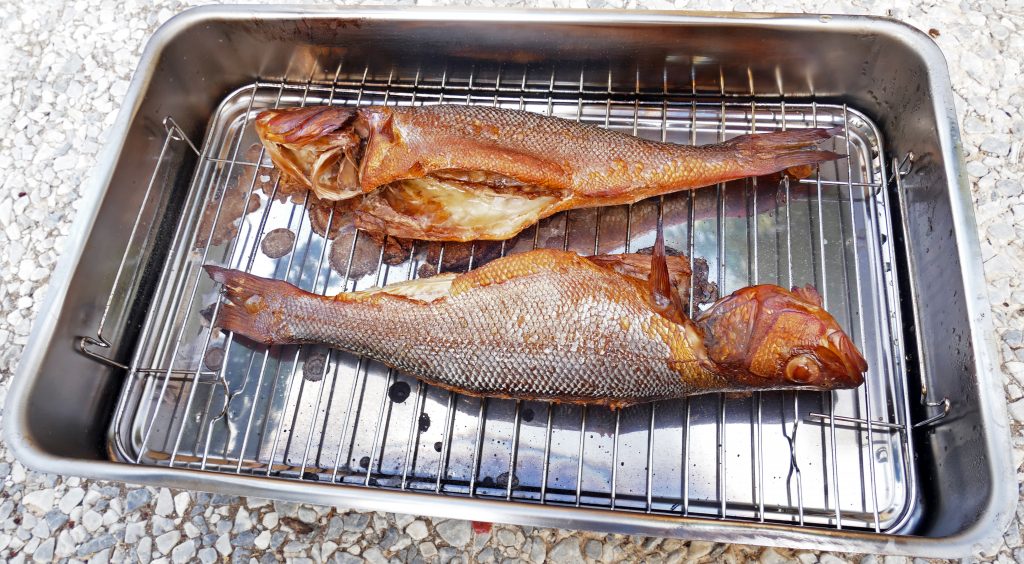
Serve the smoked fish with a nice fresh salad, to offset the strong smoky flavour of the fish.

The resulting fish was both delicious and tenderly moist. Mm mmmm!
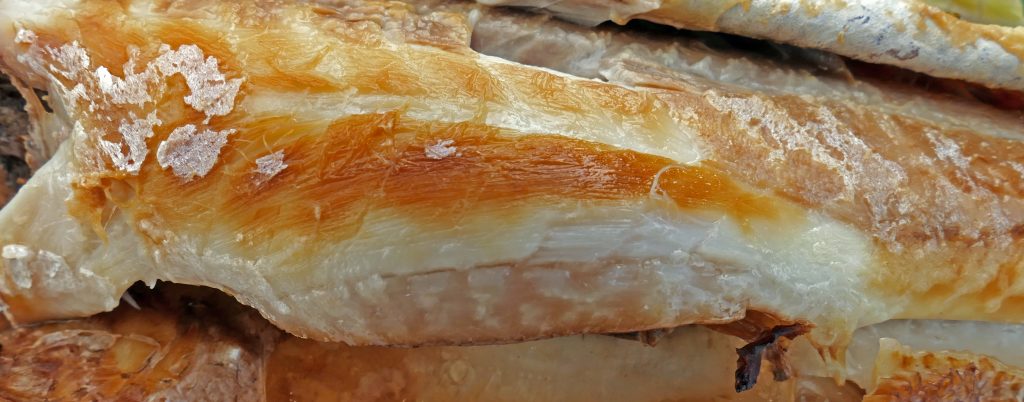
I hope you enjoyed this article on Smoking Food.
Until next time!
